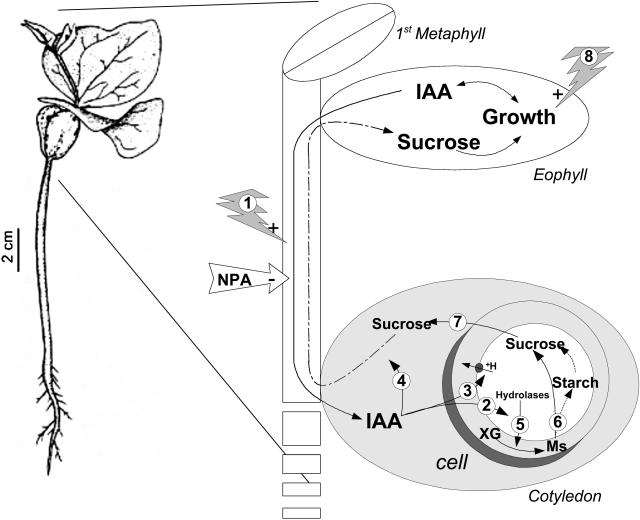Figure 6.
Representation of the synchronism between events taking place during xyloglucan mobilization and shoot development in developing seedlings of H. courbaril. Auxin (IAA) is produced in expanding leaves (eophyll and first metaphyll) and transported to cotyledons by polar transport, which can be stimulated by red light (1) and inhibited by NPA. In the cotyledons, the IAA may act on the modulation of expression of the genes coding for cell wall hydrolases (2); on +H-pump activity reducing the apoplastic pH (3); or on the establishment of vascular system (4). Following the xyloglucan (XG) degradation (5) in storage cell walls of cotyledons by the concerted action of the hydrolases, monosaccharides (Ms) are transported to the cytoplasm, where they are metabolized (6) to Suc and starch. The Suc produced is driven mainly toward the growing shoot (7). In the shoot, light stimulates (8) growth, using Suc as a carbon backbone, which results in IAA availability to the cotyledons and consequently stimulation of xyloglucan mobilization.

